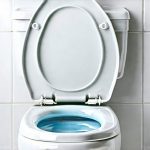Infections are an unavoidable part of life, but many are preventable through consistent and effective hygiene practices. Our daily routines offer numerous opportunities to minimize exposure to harmful microorganisms – bacteria, viruses, fungi, and parasites – that can cause illness. Understanding how these infections spread is the first step toward building a robust defense. Transmission often occurs through direct contact (touching an infected person), indirect contact (touching contaminated surfaces), droplets (coughing or sneezing), vector-borne transmission (mosquitoes, ticks), and foodborne/waterborne routes. Recognizing these pathways allows us to proactively adopt habits that interrupt the cycle of infection and safeguard our health and the health of those around us.
Good hygiene isn’t simply about cleanliness; it’s about breaking chains of infection. It’s a proactive approach to wellness, strengthening our natural defenses and reducing the burden on healthcare systems. While seemingly small actions – like washing hands or covering coughs – can have significant cumulative effects, consistently practicing these behaviors is critical. Ignoring these preventative measures often leads to increased sickness, missed work/school days, and potentially more serious health complications. A commitment to daily hygiene isn’t a luxury; it’s an investment in overall wellbeing.
Hand Hygiene: The First Line of Defense
Handwashing remains arguably the most important single measure we can take to prevent infections. Our hands are constantly interacting with surfaces and objects, picking up microorganisms along the way. These germs can then easily enter our bodies through touching our face (eyes, nose, mouth), consuming food, or coming into contact with open wounds. Proper handwashing effectively removes these harmful organisms, significantly reducing infection risk. It’s not enough to simply rinse hands with water; effective hand hygiene requires a combination of soap and water and technique.
The Centers for Disease Control and Prevention (CDC) recommends washing hands at specific times, including: before, during, and after preparing food; before eating; after using the toilet; after changing diapers or cleaning up a child who has used the toilet; after coughing, sneezing, or blowing your nose; after touching animals, animal feed, or animal waste; and after handling pet food. When soap and water aren’t available, an alcohol-based hand sanitizer containing at least 60% alcohol can be used as an alternative – though it’s less effective on visibly dirty hands.
To properly wash your hands, follow these steps:
1. Wet your hands with clean, running water (warm or cold).
2. Apply soap and lather well.
3. Scrub all surfaces of your hands—the back of your hands, between your fingers, and under your nails—for at least 20 seconds. A helpful trick is to hum the “Happy Birthday” song twice.
4. Rinse your hands thoroughly with clean, running water.
5. Dry your hands using a clean towel or air dry them.
Respiratory Hygiene & Environmental Cleaning
Respiratory infections, like colds and influenza, spread easily through droplets produced when an infected person coughs or sneezes. Practicing good respiratory hygiene is essential to minimize transmission. This includes covering your mouth and nose with a tissue when coughing or sneezing, and then disposing of the tissue properly. If a tissue isn’t available, cough or sneeze into your elbow rather than your hands – this prevents germs from spreading directly onto your hands and potentially contaminating surfaces you touch.
Beyond personal practices, maintaining a clean environment plays a crucial role in infection prevention. Regularly disinfecting frequently touched surfaces – doorknobs, light switches, countertops, phones, keyboards – helps eliminate microorganisms. Different cleaning products are effective against different types of germs; following the manufacturer’s instructions is vital for optimal results. Consider using EPA-registered disinfectants that have been proven to kill specific pathogens. Ventilation also improves air quality and reduces the concentration of airborne viruses and bacteria. Opening windows or using air purifiers can contribute to a healthier indoor environment.
Oral Hygiene & Infection Control
Oral health is often underestimated when considering infection prevention, yet it’s intimately connected to overall health. The mouth provides an ideal breeding ground for bacteria, some of which can lead to dental cavities, gum disease (gingivitis and periodontitis), and even systemic infections. Poor oral hygiene has been linked to increased risk of cardiovascular disease, diabetes complications, and respiratory infections.
- Brushing your teeth at least twice daily with fluoride toothpaste is the cornerstone of good oral hygiene.
- Flossing daily removes plaque and food particles from between teeth, where brushing can’t reach.
- Regular dental checkups (at least twice a year) allow for professional cleaning and early detection of any potential problems.
Maintaining good oral health isn’t just about preventing cavities; it’s about minimizing the bacterial load in your mouth and reducing the risk of spreading infection to other parts of your body or to others through saliva. It is also important to avoid sharing toothbrushes, as this can transmit bacteria between individuals.
Wound Care Basics
Even minor cuts and scrapes can become infected if not properly cared for. A wound provides an entry point for microorganisms, increasing the risk of infection. Simple wound care practices are crucial for preventing complications. Firstly, clean the wound thoroughly with mild soap and water to remove dirt and debris. Avoid harsh antiseptics like hydrogen peroxide or iodine, as they can damage tissue and delay healing.
After cleaning, apply a thin layer of antibiotic ointment (if recommended by a healthcare professional) to help prevent infection. Cover the wound with a clean bandage to protect it from further contamination. Change the bandage daily, or more often if it becomes wet or dirty. Watch for signs of infection—increased pain, redness, swelling, pus, or fever—and seek medical attention if any of these develop. Prompt and appropriate wound care is essential for preventing serious infections.
Travel Hygiene Considerations
Traveling exposes us to new environments and potentially different microorganisms, increasing the risk of infection. Whether traveling domestically or internationally, adopting specific hygiene practices can help stay healthy. Before traveling, consult your healthcare provider about necessary vaccinations and preventative medications. Pack a travel-sized hand sanitizer, disinfectant wipes, and any personal medications you may need.
- When flying, wipe down tray tables and armrests with disinfectant wipes.
- Be mindful of food and water safety, especially in developing countries. Drink bottled or boiled water, and avoid ice cubes.
- Practice good hand hygiene frequently, particularly after touching public surfaces.
- If you become ill during travel, seek medical attention promptly. Understanding the specific health risks associated with your destination and taking appropriate precautions can significantly reduce your risk of infection while traveling.





















